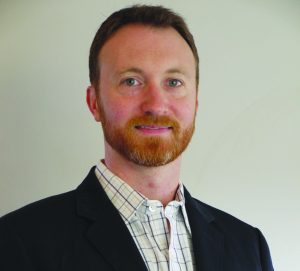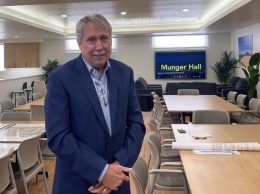Higher education faces disruption because of technology
IN THIS ARTICLE
- Columns Topic
- Tony Biasotti Author
By Tony Biasotti Friday, March 11th, 2016

Tony Biasotti
Business scholar and consultant Clayton Christensen coined the phrase “disruptive innovation” in the 1990s to describe a breakthrough that reshapes a market and displaces its leading firms. Twenty years later, “disruption” might be the defining theory of the modern economy.
Print newspapers, brick-and-mortar retail and taxis have been some of its chief victims. On a smaller scale, the Bay Area is littered with startups trying to become the “Uber for X” by disrupting doing the laundry and shopping for groceries.
The American university education remains fairly un-disrupted, but it is also a sitting duck for technological change. The idea of gathering thousands of 18-22-year-olds on a central campus, full of expensive buildings and services, and teaching them largely through in-person lectures seems quaint and almost silly from the point of view of a Silicon Valley disruptor.
Last month, the MIT Enterprise Forum of the Central Coast devoted its monthly meeting in Santa Barbara to a discussion of disruption in higher education. Leaders in both the non-profit and for-profit educational fields brought different perspectives but agreed on one thing: Centuries of stagnation in higher education are coming to an end.
“I’ve been in higher ed for 40 years,” said the event’s moderator, Guy Smith, an instructor and chairman of the bachelor’s of arts program at Antioch University in Santa Barbara. “I’d like to be able to stand up here and tell you it’s really changed, but it hasn’t. It’s pretty much the same as it always was.”
The primary model of instruction remains the lecture, Smith said, which dates to medieval universities.
“Books were hand printed, so they got the guy with the book to come in and read and people would try to write down as much as possible,” he said. “Luckily, we’re no longer doing that. Oh, I’m sorry — we are.”
There is little consensus about where universities are going. Smith predicts a “shakedown in enrollment” at small private colleges, which tend to charge the most. But the shakedown is happening elsewhere, and Smith pointed out that enrollment at the private, for-profit University of Phoenix is about half of what it was in 2010.
At every college and university, teaching methods will evolve, said Britt Andreatta, a former UC Santa Barbara professor who is now director of learning and development for Lynda.com, now owned by LinkedIn.
“It turns out that most of our educational techniques don’t actually work with how the brain learns,” said Andreatta, who has studied and written about the neuroscience of learning.
One technique based on the new brain research, she said, is the “flipped classroom.” Instead of using class time to listen to lectures and outside time to practice and apply the concepts, the flipped classroom lets students hear lectures online, on their own time, and use class time to do group projects or discuss the material with the instructor.
Though they will have to adapt in some ways, prestigious research institutions like UCSB appear well positioned for the disrupted future. They offer something students can’t get from their parents’ basements: A complete experience where learning goes beyond what happens in the classroom and where students can personally interact with brilliant academic minds.
It’s the middle-of-the-pack universities, public and private, that must find ways to justify their existence in the face of online competition and other alternatives. In this way, education is being disrupted in much the same way retail was — high-end boutiques and discount stores are relatively all right, while the department stores that once made up the middle of the market are either out of business or scrambling to survive.
At the low end of the price spectrum are community colleges. Disruption in the education business is an opportunity for them, because they offer a stripped-down experience, without dorms or other frills, that can focus on the skills students need to get good jobs.
“I think we can all agree that community colleges are an exceptional deal and they are an open-access institution,” said Steve Wright, statewide workforce and economic development director for California’s community colleges.
One of his tasks is to design “pathways” to good jobs through the community college system. Those are open to young people just out of high school, but they’re also important for middle-aged workers who lose their jobs and must learn new skills.
Wright predicts “a period of chaos and confusion” for higher education, as it grapples with the forces reshaping so much of the economy. But it’s important to remember that while technological disruption isn’t great for, say, a taxi cab owner, it’s been great for someone who wants a cheap, easily accessible ride across town.
“Eventually, it’s going to be wonderful,” Wright said. “The students are really going to benefit.”
• Contact Tony Biasotti at TonyBiasotti@gmail.com.











